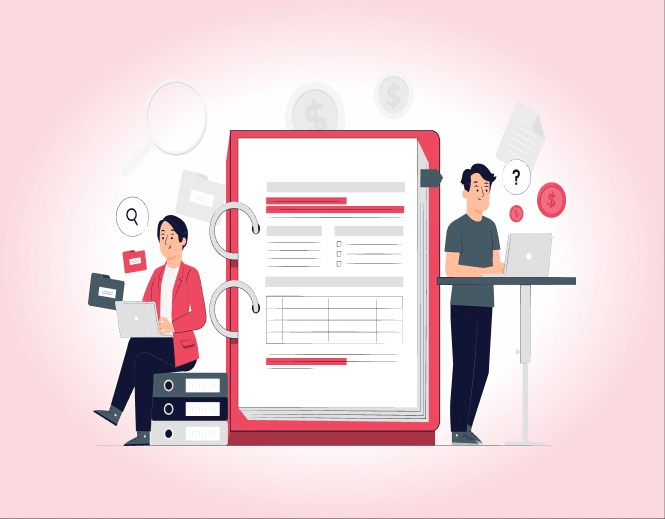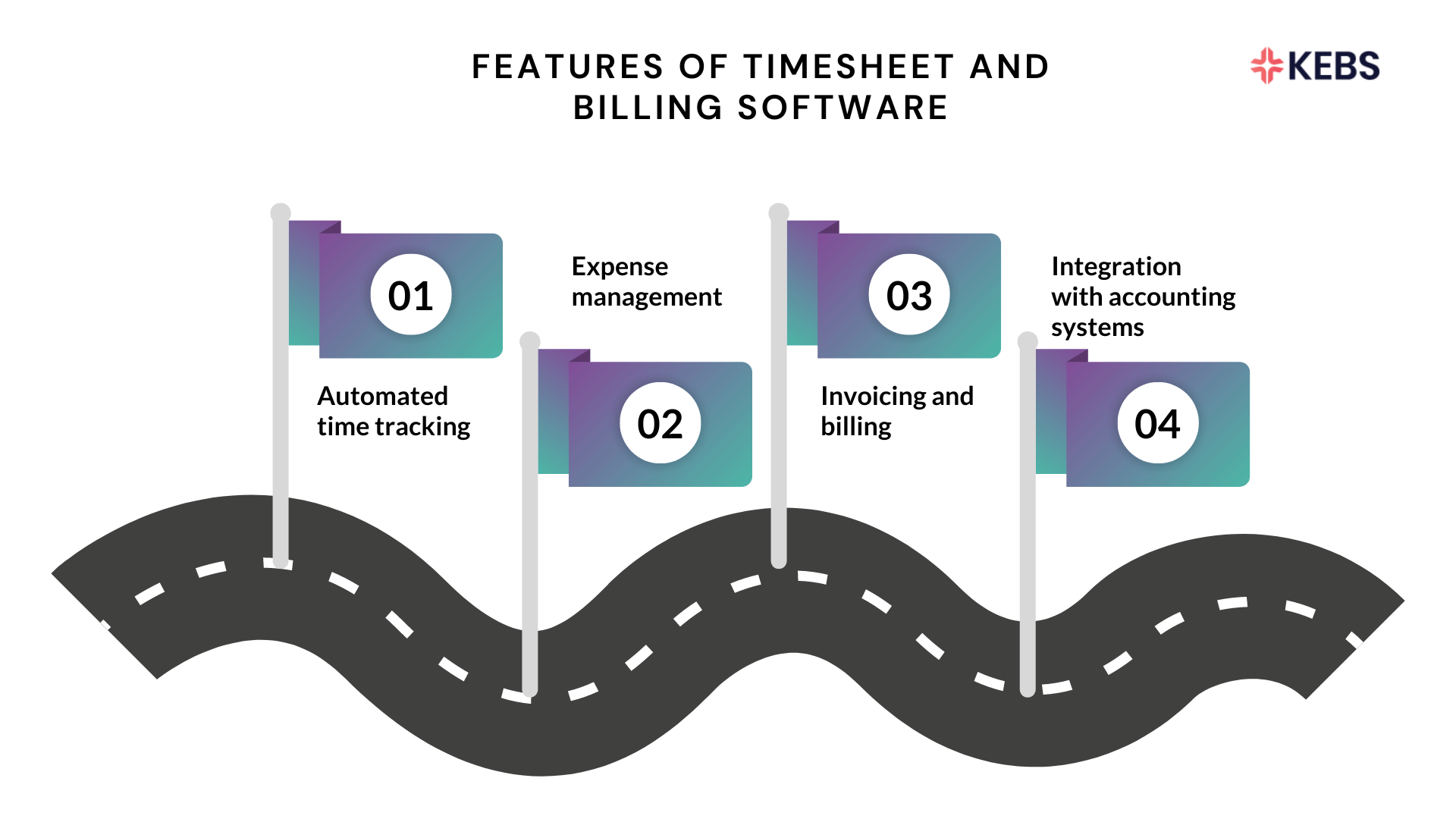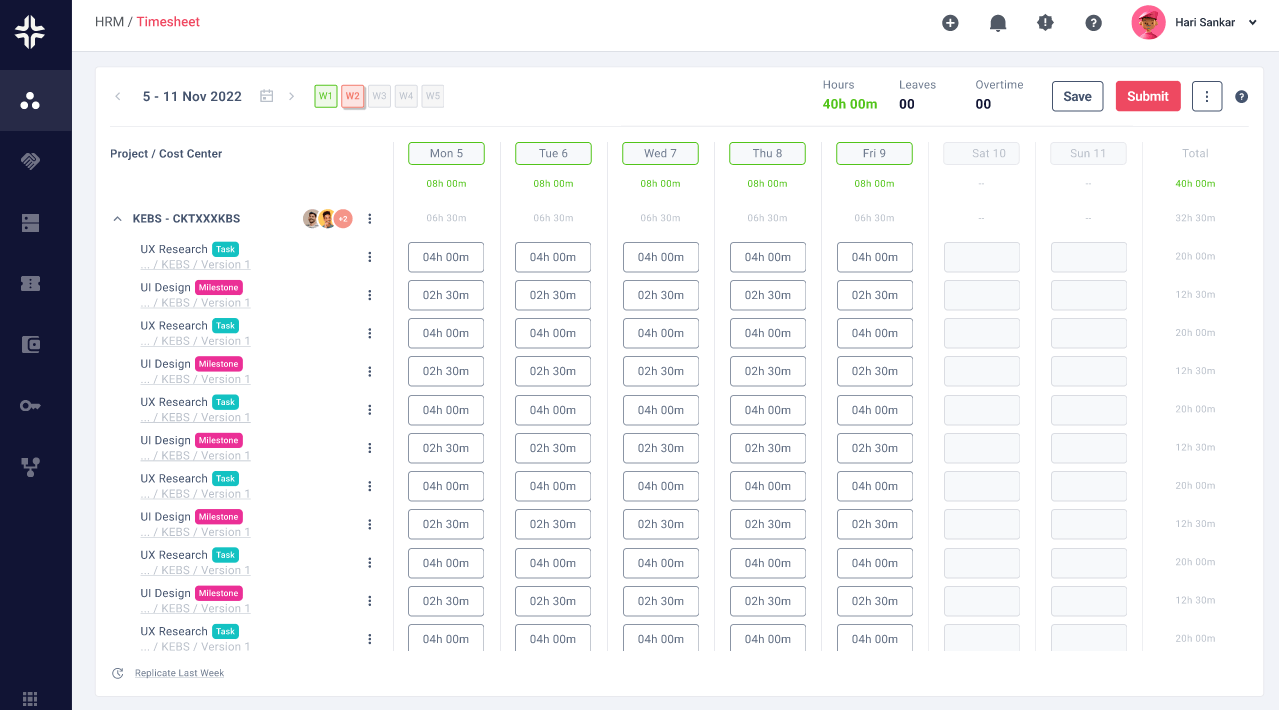
Home »
Streamlining Project Billing -Timesheet & Billing Software
Discover how automation enhances accuracy and optimizes invoicing for successful project management.
Introduction
Project billing involves the systematic process of tracking and invoicing clients for services rendered. It encompasses recording billable hours, expenses, and ensuring compliance with client contracts. Efficient project billing is essential for maintaining healthy cash flow, optimizing resource allocation, and meeting client expectations.
Streamlining project billing processes is crucial in today’s competitive business landscape. Manual time tracking and data entry, along with cumbersome administrative tasks, often lead to errors and delays. These challenges can negatively impact an company’s profit, client relationships, and overall efficiency.
Features of Timesheet and billing software
Timesheet and billing software offer a wide range of features tailored to meet the specific needs of project-based businesses. These features typically include:
- Automated time tracking: The software allows employees to record their working hours effortlessly. It eliminates the need for manual timesheets and provides real-time visibility into project progress.
- Expense management: Integrated expense tracking features enable users to record project-related expenses, such as travel costs or equipment purchases. This streamlines expense management and ensures accurate billing.
- Invoicing and billing: The software enables businesses to generate customized invoices based on recorded time and expenses. It simplifies the billing process and allows for flexible invoicing options, such as hourly rates or fixed project fees.
- Integration with accounting systems: Timesheet and billing software seamlessly integrate with popular accounting systems. This facilitates smooth financial management and reduces duplicate data entry.

Benefits of Timesheet and billing software
By utilizing timesheet and billing software, businesses can streamline their project billing processes and experience several benefits:
- Improved accuracy in billing and invoicing, reducing disputes and payment delays. Enhanced efficiency through automation, saving time on administrative tasks.
- Real-time visibility into project profit, enabling better decision-making. Simplified financial management and seamless integration with existing systems.
Benefits of Timesheet and billing software
| Benefits of Timesheet and Billing Software | Key Advantages |
| Improved accuracy in billing and invoicing | Automated Time Tracking and Data Entry |
| Enhanced efficiency through automation | Real-Time Tracking of Project Expenses |
| Real-time visibility into project profit | Integration with Accounting Systems |
| Simplified financial management | Customizable Invoicing and Billing Options |
By utilizing timesheet and billing software, businesses can streamline their project billing processes and experience several benefits:
Improved accuracy in billing and invoicing, reducing disputes and payment delays. Enhanced efficiency through automation, saving time on administrative tasks.
Real-time visibility into project profit, enabling better decision-making. Simplified financial management and seamless integration with existing systems.
Automated Time Tracking and Data Entry
One of the primary advantages of using timesheet and billing software is automated time tracking. Instead of relying on manual timesheets, employees can record their working hours directly within the software. This eliminates the risk of errors and significantly reduces the time spent on time entry.
The software captures detailed information about the tasks performed, project assignments, and associated billing codes. This data can be categorized by projects, clients, or specific activities, providing valuable insights into resource allocation and project profit.
Real-Time Tracking of Project Expenses
In addition to time tracking, timesheet and billing software allows businesses to monitor and track project expenses in real-time. Employees can easily record expenses related to projects, such as travel costs, materials, or subcontractor fees.
By integrating expense tracking with project billing, businesses gain a comprehensive view of project costs. This data ensures accurate client invoicing and enables organizations to make informed decisions regarding budgeting and cost control.
Integration with Accounting Systems
Timesheet and billing software seamlessly integrate with accounting systems, enabling smooth financial management. The software can automatically transfer recorded time, expenses, and billing information to the accounting system, reducing the need for duplicate data entry.
Integration with accounting systems ensures consistency and accuracy in financial records, streamlining the billing and payment processes. It simplifies the reuniting of invoices, tracks outstanding payments, and provides a clear overview of the company’s financial health.
Customizable Invoicing and Billing Options
Timesheet and billing software offer custom-make invoicing and billing options to suit various business requirements. Users can create professional-looking invoices with their branding, choose different invoice templates, and customize the layout and content.
The software allows for flexible billing methods, such as hourly rates, fixed project fees, or milestone-based invoicing. This ensures that businesses can align their invoicing processes with client preferences and contractual obligations.
Improving Accuracy and Efficiency
By implementing timesheet and billing software, organizations can significantly improve the accuracy and efficiency of their project billing processes.
Reduction of Human Errors
Manual time tracking and data entry are prone to errors, leading to mistakes in billing and invoicing. Timesheet and billing software eliminate these errors by automating the process. Employees can easily record their hours worked, reducing the risk of underbilling or overbilling clients.
Automated calculations ensure accurate invoicing, and billing codes eliminate confusion regarding project tasks and activities. This reduction in human errors results in improved client satisfaction, streamlined payment processing, and enhanced overall accuracy in financial records.
Faster Invoicing and Payment Processing
Traditional billing processes often involve manual paperwork, delays in data entry, and extensive approval cycles. This can lead to delayed invoicing and payment processing, impacting cash flow and hindering project progress.
Timesheet and billing software accelerate the invoicing and payment cycle. It generates invoices promptly based on recorded time and expenses, allowing for faster client billing. This reduces payment delays and ensures a steady cash flow for the organization.
Enhanced Project Profit
Accurate and timely project billing is directly linked to project profit. By utilizing timesheet and billing software, businesses gain valuable insights into project costs, revenue, and resource usage.
The software’s reporting capabilities provide detailed visibility into project profit metrics, such as billable hours, project expenses, and revenue generated.

Ensuring Compliance and Transparency
Timesheet and billing software offer features that ensure compliance with client contracts, data security, and transparency in project billing. Timesheet and billing software provides comprehensive audit trails, allowing organizations to track and review changes made to project records. This feature enhances accountability and transparency in project billing.
The software’s reporting capabilities enable businesses to generate detailed project and client reports. These reports offer insights into project progress, resource utilization, budget adherence, and profit. Detailed reporting facilitates effective communication with clients by providing transparent and accurate information regarding project billing. Clients appreciate the clarity and visibility into project costs and progress, fostering trust and long-term relationships.
Timesheet and billing software enables organizations to track project costs efficiently. By capturing expenses and associating them with specific projects or activities, businesses gain a comprehensive view of project budgets.This cost tracking functionality allows for detailed analysis of project expenditures, budget variances, and cost-saving opportunities. It empowers businesses to optimize project budgets, identify areas of improvement, and deliver projects within expected financial parameters.
Integration with Project Management Tools
Timesheet and billing software seamlessly integrates with popular project management tools, enhancing collaboration and streamlining project workflows. Integration with project management tools creates a seamless flow of information between project teams and the billing process. Employees can track their time and update project statuses directly within the project management tool, ensuring accurate and up-to-date data for billing purposes.
Collaboration features, such as document sharing and team communication, foster efficient collaboration between project teams, clients, and billing personnel. This integration eliminates silos and enhances transparency throughout the project lifecycle.Timesheet and billing software integration with project management tools streamlines the project workflow. Project milestones, task assignments, and deadlines can be synchronized with the software, ensuring accurate billing and invoicing based on project progress.
By automating the transfer of project-related data, organizations can minimize manual effort, reduce administrative tasks, and focus on project delivery. This streamlined workflow improves efficiency, minimizes errors, and enhances overall project management.Timesheet and billing software acts as a centralized storage for project-related data. All relevant information, including timesheets, expenses, invoices, and client details, is stored in a single location. Centralized data management simplifies data retrieval, eliminates the need for multiple spreadsheets or systems, and ensures data consistency. It improves data accuracy, enhances reporting capabilities, and facilitates comprehensive analysis of project performance.
Choosing the Right Timesheet and Billing Software
Selecting the right timesheet and billing software is essential to maximize the benefits and ensure a successful implementation. When evaluating software options, businesses should consider several factors:
- Features: Assess the software’s features and functionalities to determine if they align with your business requirements. Consider aspects such as time tracking, expense management, invoicing options, reporting capabilities, and integration capabilities.
- Ease of use: Look for software that is user-friendly and intuitive. Consider the learning curve for employees and the availability of training or support resources.
- Scalability: Evaluate the software’s scalability to accommodate your company’s future growth. Ensure that it can handle an increasing number of projects, employees, and clients.
- Integration capabilities: Consider the software’s ability to integrate with other systems, such as accounting software or project management tools. Seamless integration enhances efficiency and eliminates duplicate data entry.
- Cost: Assess the software’s pricing structure and determine if it fits within your budget. Consider any additional costs, such as implementation, training, or ongoing support.
Implementation and Adoption
Implementing timesheet and billing software requires careful planning and effective change management. Follow these steps to ensure a smooth implementation process:
- Define objectives: Clearly outline the goals and objectives of implementing timesheet and billing software. Communicate the benefits to employees and stakeholders to gain their support and commitment.
- Evaluate requirements: Assess your company’s specific requirements and customize the software accordingly. Determine the necessary configurations, workflows, and access controls to align with your business processes.
- Training and onboarding: Provide comprehensive training to employees on how to use the software effectively. Conduct workshops or webinars to familiarize them with features, best practices, and workflows.
- Data migration: If migrating from an existing system, plan and execute the data migration process carefully. Ensure data integrity and accuracy during the transition to the new software.
Overcoming resistance to change is a common challenge during software implementation. To mitigate this, involve employees in the decision-making process, communicate the benefits clearly, and provide ongoing support and training. Emphasize how the software will simplify their workload, enhance accuracy, and contribute to their professional growth.
Power of KEBS Unified Time-Tracking

The power of KEBS Unified Time-Tracking Platform lies in its ability to streamline and optimize time tracking processes, providing numerous benefits for businesses. Here are some key advantages of KEBS Unified Time-Tracking Platform:
- Centralized Time Tracking: KEBS offers a centralized platform for time tracking, reducing the need for multiple tools or spreadsheets. Employees can easily log their time spent on different projects or tasks, providing a combine view of time data.
- Enhanced Project Management: The Unified Time-Tracking Platform integrates with KEBS project management features, enabling project managers to monitor and analyze time spent on various tasks and projects. This data helps in resource allocation, project scheduling, and identifying areas of improvement.
- Accurate Project Costing: By capturing accurate time data, KEBS platform enables precise project costing. Project managers can track the actual time spent on tasks and compare it against the estimated time, helping to determine project profit and make informed decisions.
- Streamlined Invoicing: The Unified Time-Tracking Platform seamlessly integrates with KEBS billing and invoicing functionalities. It automates the process of converting tracked time into billable hours, generating accurate invoices for clients or internal departments.

| Advantages of KEBS Unified Time-Tracking Platform | Key Benefits |
| Centralized Time Tracking | Enhanced Project Management |
| Reduces need for multiple tools or spreadsheets | Integrates with KEBS project management features |
| Employees can easily log time on projects | Monitors time spent on tasks and projects |
| Provides a combined view of time data | Aids in resource allocation and project scheduling |
| Accurate Project Costing | Streamlined Invoicing |
| Enables precise project costing | Seamlessly integrates with KEBS billing and invoicing |
Conclusion
Streamlining project billing processes is essential for businesses to improve accuracy, efficiency, and client satisfaction. Timesheet and billing software offer a comprehensive solution to automate time tracking, expense management, invoicing, and financial integration.
By adopting timesheet and billing software, businesses can benefit from automated time tracking, real-time expense monitoring, custom-make invoicing options, and seamless integration with accounting systems. These features contribute to improved accuracy, faster invoicing and payment processing, enhanced project profit, and compliance with client contracts. When selecting timesheet and billing software, consider features, ease of use, scalability, integration capabilities, and cost. Implementing the software requires careful planning, effective change management, and ongoing support to ensure successful adoption.
KEBS – PSA software helps to streamline and optimize your company’s time tracking processes. Contact us to know more!









